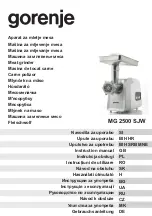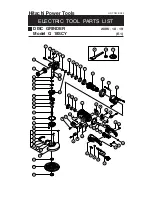
19
6
13
12
A1...A4
A4
A2
A3
A1
The figures show an example of a guiding
machine from the manufacturer "Brokk".
16
6
7
16
Wall
Guide arm
Grinding machine
Guiding machine
3 Operating
EN Wall, ceiling and floor grinding machine WDS 250
WDS250‐en‐220909
8
2.
Turn the grinding machine in the direction of the guide arm
[19] and place with the supporting feet [13] on a level, hor
izontal floor with adequate load capacity (e.g. pallet or
floor) (
!
Fig. on page 6).
3.
Check tools for function and condition and replace if neces
sary (
!
Chapter 4.4, Page 15).
4.
Connect the 4 hydraulic connections [A1...A4] between the
guide arm and the grinding machine.
The hydraulic couplings on the guide arm and on the grin
ding machine have different sizes and markings and must
not be mixed up.
GG"
For wall grinding the grinding machine must be turned by
90° and for floor grinding by 180°!
5.
If necessary adjust the angle between grinding machine
and guide arm (
!
Chapter 4.2, Page14).
6.
Swivel the grinding head to the required position
(
!
Chapter 4.3, Page 15).
7.
Connect the suction hose to the dust extraction connection
[16] and guide it with the Velcro straps on the grinding ma
chine (if necessary, move the Velcro strap [7] as required).
Depending on requirements, a maximum of 2 hoses can be
connected to the connections for dust suction [16].
The manufacturer recommends using suction devices with
a suction capacity of approx. 500 m3/h ... 2200 m3/h.
GG"
Connections to the dust suctions that are not used have to
be closed with the corresponding caps!
GG"
For wall grinding, the guiding machine
with the guide arm must be parallel to
the wall (
!
Figure)!
8.
Coupling the guide arm to the machine
(
!
Chapter 4.1, Page 12).
9.
Lift the grinding machine with the
guide arm and move the guiding ma
chine into the working position.
10. Check the safety equipment for
completeness and function before
starting up!









































